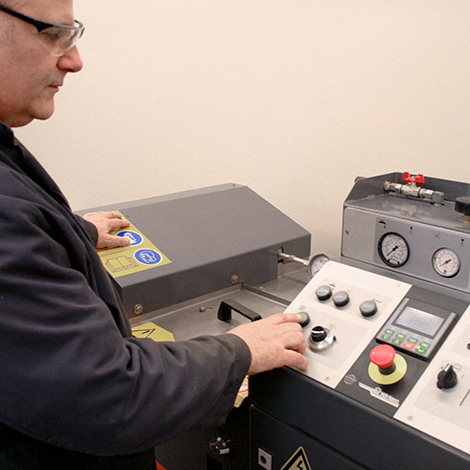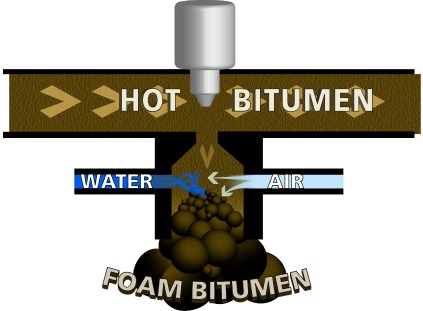Foamed asphalt is becoming increasingly prevalent as a stabilizing agent for pavement rehabilitation projects throughout the Upper Midwest.
Generally speaking, the life of a properly designed and constructed roadway ranges from 10 to 30 years. A roadway’s longevity is impacted by several factors, including traffic loads/volume, materials used, construction quality, and climate.
Pavement reclamation (a method of pavement rehabilitation) provides a means for extending—and improving—the life of an existing roadway. The process involves grinding the roadway’s existing asphalt down to a prescribed depth, while collecting the debris. The recovered material is the pulverized to a specific size. The resulting granular material is known as reclaimed asphalt pavement (RAP).
On its own, RAP can often times be used as a partial substitute for aggregate base. When incorporated with a stabilizing agent, it’s rejuvenated into a pliable mix that can be planed and compacted onto the roadway substructure as new paving.
Commonly used stabilizing agents include cement, asphalt emulsion, and foamed asphalt. While foamed asphalt has been used as a stabilizing agent since the 1970s, it initially failed to gain traction because of safety and operational concerns. But with recent technological advances, foamed asphalt is becoming a viable option for more and more highway agencies—including those in the Upper Midwest.
What is foamed asphalt?
Foamed asphalt is essentially liquid asphalt (also known as “bitumen”) heated to 280-340 degrees Fahrenheit and then injected with a small quantity of cold water (1-4% by weight). When this happens, the water expands on contact, foaming the hot asphalt from 5 to 40 times its initial volume, depending on project specifications.
The expanded asphalt is then mixed with RAP, aggregate base, or a mixture of both. This mixture is called a “foamed asphalt mix” or “foamed asphalt material.”
Foamed asphalt mixes are designed in a laboratory setting using foaming machines and pug mills. Used in conjunction with field samples, this laboratory equipment helps determine the amount of bitumen and water needed in the field—a critical step for designing a mix that meets project specifications.
Why foam?
The purpose of foaming the asphalt is to make it easier for asphalt to mix with cold RAP and/or granular materials at ambient temperature. A hot, liquid asphalt binder would be impossible to mix with cold aggregates, whereas foamed asphalt can be uniformly dispersed throughout the mix. Think of it like beating egg whites into a foam before mixing them with dry ingredients (Raffaeilli, 2004).
What makes a project a good candidate for foamed asphalt?
Every roadway must be evaluated before a pavement rehabilitation project begins. During this phase, engineers perform cores, soil borings, and aggregate base sampling and testing to determine which stabilizing agent is best for a project.
The P200 content of the reclaimed or recycled roadway can affect the choice of stabilizing agent, too. P200 refers to aggregate particles that are small enough to fit through a #200 (0.075 millimeter) sieve.

Typically, if a reclaimed or recycled roadway has higher than 4% P200 in the combined material being stabilized, foamed asphalt may be a viable alternative. Lower P200 contents (i.e., coarser materials) can work, but they often require additional material, such as cement or fly ash, to be added to the mix. Materials with lower P200 contents may also be candidates for stabilization with asphalt emulsion.
Foamed asphalt can be used with both stabilized full-depth reclamation (FDR) and cold-in-place recycling (CIR) techniques.
What are the benefits of foamed asphalt?
For FDR projects, foamed asphalt is suitable for a mixture of asphalt, base and subgrade. When compared to other stabilizing agents, it does a better job of stabilizing materials with relatively high P200 content, 10-12%, including blending in a small amount of plastic (clay) subgrade soils.
What’s next for foamed asphalt?
When it comes to pavement rehabilitation, foamed asphalt is another tool in the toolbox. There are some areas of the country that predominantly use foamed asphalt, while others focus on emulsion technology or cement. Each pavement rehabilitation project is unique; the choice of stabilizing agent will depend on consideration of several factors.
Allen Hartleib is the bituminous lab supervisor in AET’s Saint Paul Pavement Management Department. He can be reached at ahartleib@amengtest.com.



